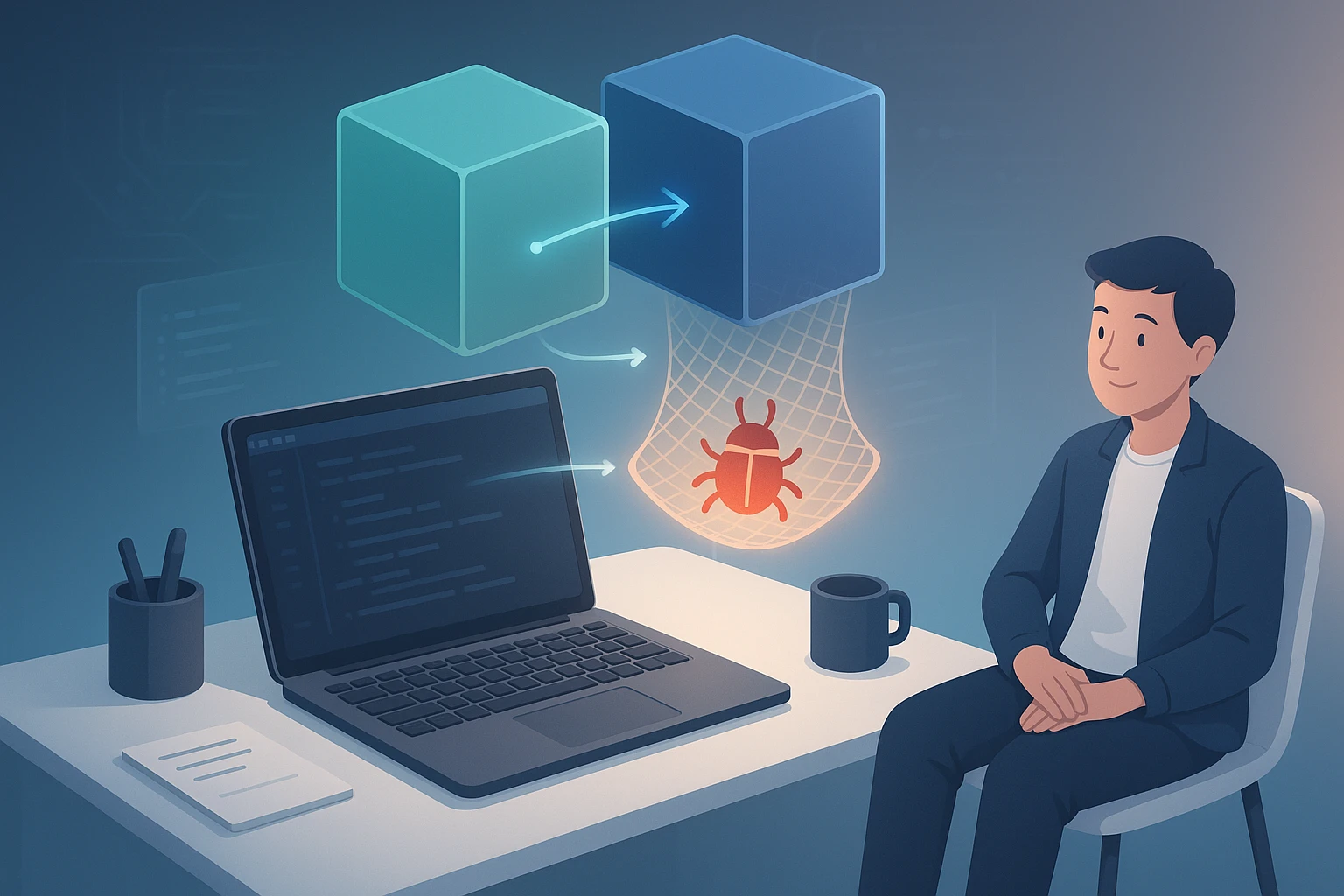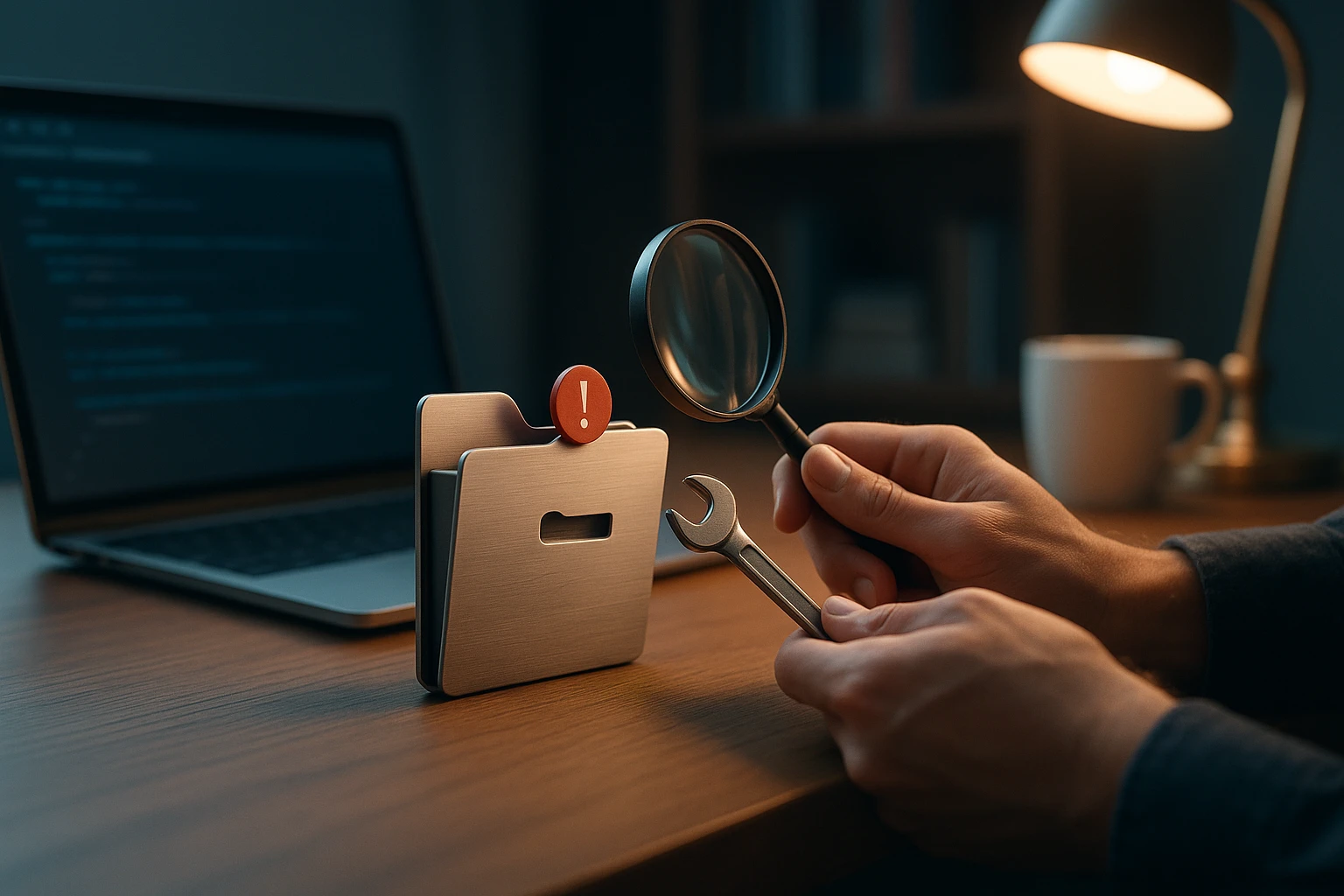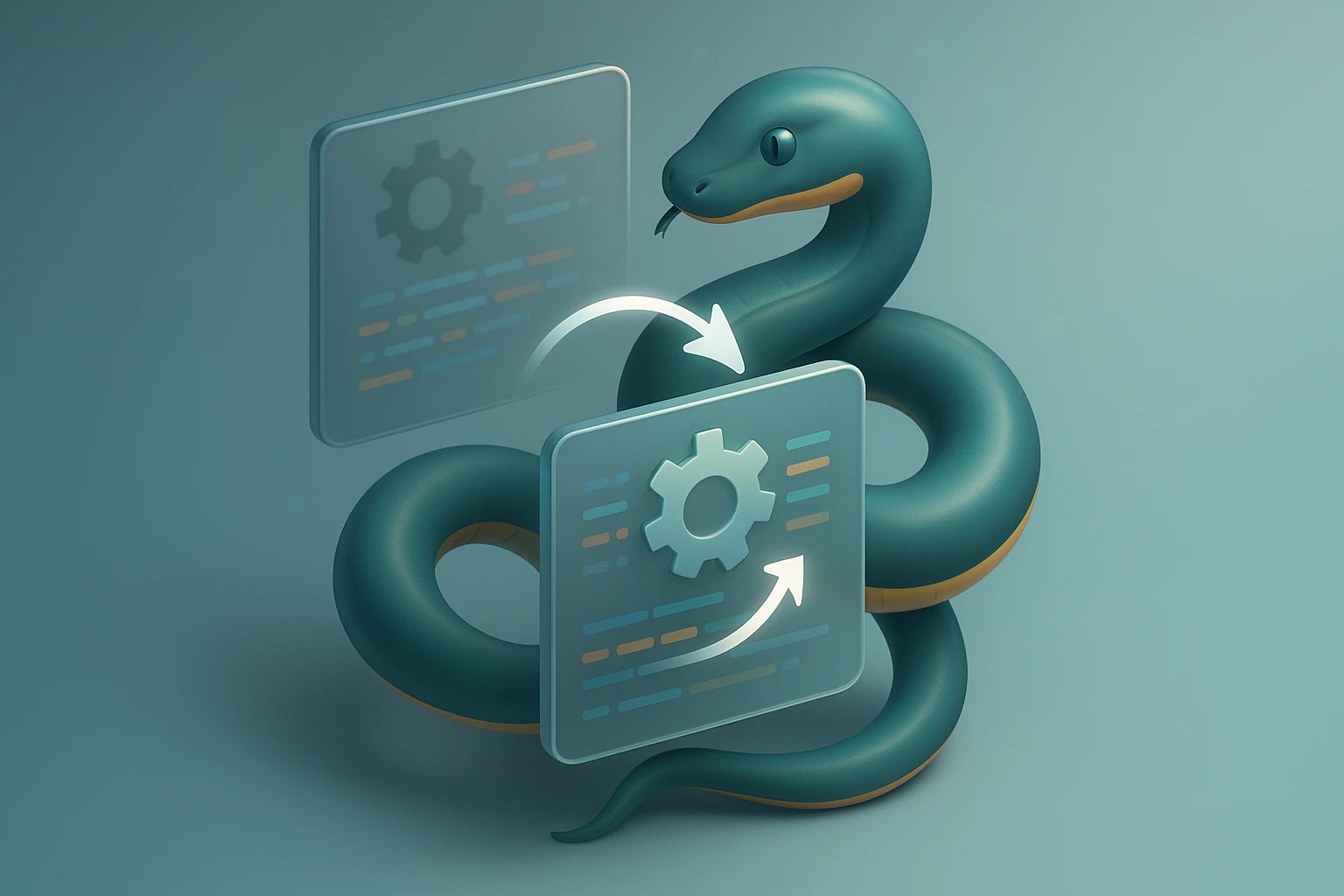How to Use try-except Blocks Properly
Diagram of try-except usage: try runs risky code, except catches specific exceptions, finally cleans up; avoid bare except, log errors, re-raise if needed, keep handlers minimal.!!

Error handling is not just a technical necessity—it's a fundamental aspect of writing software that respects both the user experience and the maintainability of your codebase. When applications fail silently or crash unexpectedly, they erode trust and create frustration. Proper exception handling transforms potential disasters into manageable situations, allowing your programs to respond gracefully to the unexpected while providing meaningful feedback to users and developers alike.
Try-except blocks are structured programming constructs that allow developers to anticipate, capture, and respond to runtime errors without terminating the entire application. This mechanism provides a safety net that catches exceptions—abnormal conditions that disrupt normal program flow—and redirects execution to appropriate recovery code. Understanding this pattern opens the door to creating resilient applications that can handle real-world unpredictability with elegance and precision.
Throughout this exploration, you'll discover the fundamental principles of exception handling, learn to distinguish between different error types, master the syntax and best practices for implementing try-except blocks, and understand when to catch exceptions versus when to let them propagate. You'll also gain insights into common pitfalls that even experienced developers encounter and learn strategies for writing exception handling code that enhances rather than obscures your program's logic.
Understanding the Foundation of Exception Handling
Exception handling represents a paradigm shift from traditional error checking methods. Rather than cluttering your code with countless conditional statements checking for error conditions after every operation, exception handling separates the "happy path" of normal execution from error recovery logic. This separation creates cleaner, more readable code that clearly expresses intent.
When an exceptional condition occurs during program execution—whether it's a file that doesn't exist, a network connection that times out, or an attempt to divide by zero—the programming language raises an exception. This exception is an object containing information about what went wrong, where it happened, and potentially why it occurred. Without proper handling, this exception would propagate up the call stack until it either encounters a handler or terminates the program with an error message.
"The difference between a good program and a great one often lies in how it handles the situations that weren't supposed to happen."
The try-except block creates a protected region where you anticipate potential errors. The try clause contains the code that might raise an exception, while the except clause defines what should happen when specific exceptions occur. This structure allows you to maintain normal program flow while being prepared for exceptional circumstances.
Basic Syntax and Structure
The fundamental structure of a try-except block follows a consistent pattern across most programming languages, though syntax details vary. In Python, the most straightforward form captures any exception that occurs within the try block:
try:
# Code that might raise an exception
result = risky_operation()
process_result(result)
except:
# Code that runs if any exception occurs
handle_error()However, catching all exceptions indiscriminately is rarely the right approach. More sophisticated exception handling specifies which exception types to catch, allowing different recovery strategies for different error conditions:
try:
file_content = read_configuration_file("config.json")
settings = parse_json(file_content)
except FileNotFoundError:
settings = create_default_settings()
except json.JSONDecodeError:
log_error("Configuration file is corrupted")
settings = create_default_settings()
except PermissionError:
notify_admin("Cannot access configuration file")
raiseThe Exception Hierarchy and Specificity
Exceptions are organized in a hierarchical structure, with more general exception types at the top and more specific ones branching below. Understanding this hierarchy is crucial for writing effective exception handlers. When you catch a general exception type, you also catch all its subtypes, which can be either helpful or problematic depending on your intent.
| Exception Category | Common Subtypes | When to Catch | Recovery Strategy |
|---|---|---|---|
| IOError / OSError | FileNotFoundError, PermissionError, IsADirectoryError | File operations, network I/O | Provide fallback files, retry with different paths, notify user |
| ValueError | UnicodeError, JSONDecodeError | Data parsing, type conversions | Request valid input, use default values, log malformed data |
| TypeError | Various type-related errors | Function argument validation | Validate inputs earlier, provide clear error messages |
| KeyError / IndexError | Dictionary and list access errors | Data structure operations | Check existence before access, provide defaults |
| ConnectionError | TimeoutError, ConnectionRefusedError | Network operations | Retry with exponential backoff, use cached data, notify user |
The principle of specificity dictates that you should catch the most specific exception type that accurately represents the error condition you're prepared to handle. Catching overly broad exception types can mask unexpected errors and make debugging significantly more difficult. Always order your except clauses from most specific to most general, as the first matching handler will be executed.
Advanced Exception Handling Patterns
Beyond basic try-except blocks, several advanced patterns enhance your ability to handle errors elegantly and maintain clean code architecture. These patterns address common scenarios where simple exception catching proves insufficient.
Multiple Exception Handlers and Exception Chaining
Complex operations often involve multiple potential failure points, each requiring different handling strategies. You can specify multiple except clauses to handle different exception types distinctly, or group related exceptions together when they warrant identical handling:
try:
response = fetch_data_from_api(endpoint)
data = parse_response(response)
validated_data = validate_schema(data)
store_in_database(validated_data)
except (ConnectionError, TimeoutError) as network_error:
log_error(f"Network issue: {network_error}")
queue_for_retry(endpoint)
except ValidationError as validation_error:
log_warning(f"Invalid data received: {validation_error}")
alert_data_quality_team(validation_error.details)
except DatabaseError as db_error:
log_critical(f"Database operation failed: {db_error}")
rollback_transaction()
raise"Exception handling is not about suppressing errors—it's about responding to them appropriately at the right level of abstraction."
The as keyword binds the exception object to a variable, allowing you to access error details, stack traces, and custom attributes. This information is invaluable for logging, debugging, and providing meaningful feedback to users or calling code.
The else Clause: Success Path Separation
The else clause in a try-except block executes only when no exception occurs in the try block. This might seem redundant—why not just put that code in the try block? The answer lies in clarity and precision. Code in the else clause is protected from the exception handlers, making it clear which operations might raise the exceptions you're catching:
try:
file_handle = open("important_data.txt", "r")
except FileNotFoundError:
print("File not found, creating new file")
file_handle = open("important_data.txt", "w")
else:
# This runs only if opening succeeded
# Any exceptions here won't be caught by the FileNotFoundError handler
content = file_handle.read()
process_content(content)
finally:
file_handle.close()This pattern makes exception handling more precise and prevents accidentally catching exceptions from code that wasn't meant to be protected by that particular handler.
The finally Clause: Guaranteed Cleanup
Resource management is one of the most critical aspects of robust programming. Whether you're working with files, network connections, database transactions, or locks, you need assurance that cleanup operations execute regardless of whether exceptions occur. The finally clause provides this guarantee:
database_connection = None
try:
database_connection = establish_connection(credentials)
transaction = database_connection.begin_transaction()
perform_critical_operations(transaction)
transaction.commit()
except DatabaseError as error:
if transaction:
transaction.rollback()
log_error(f"Transaction failed: {error}")
raise
finally:
if database_connection:
database_connection.close()The finally block executes whether the try block completes successfully, an exception is raised and caught, an exception is raised and not caught, or even if a return statement is encountered. This makes it the perfect place for cleanup operations that must happen under all circumstances.
Context Managers and the With Statement
While finally clauses ensure cleanup code runs, they can make your code verbose when dealing with resources that follow the acquire-use-release pattern. Context managers, implemented through the with statement, provide a more elegant solution that automatically handles setup and teardown operations:
with open("data.txt", "r") as file:
content = file.read()
process(content)
# File is automatically closed here, even if an exception occurredContext managers encapsulate the try-finally pattern, ensuring that resources are properly released even when exceptions occur. You can create custom context managers for any resource that requires cleanup, making your code more maintainable and less prone to resource leaks.
"The best exception handler is the one that never needs to run because you've designed your system to prevent the error in the first place."
Creating Custom Context Managers
When you have resources or operations that require consistent setup and teardown logic, creating a custom context manager eliminates repetitive try-finally blocks and centralizes resource management:
from contextlib import contextmanager
@contextmanager
def database_transaction(connection):
transaction = connection.begin()
try:
yield transaction
transaction.commit()
except Exception:
transaction.rollback()
raise
finally:
transaction.close()
# Usage
with database_transaction(db_connection) as trans:
trans.execute("INSERT INTO users VALUES (?)", user_data)
trans.execute("INSERT INTO audit_log VALUES (?)", log_entry)Best Practices for Exception Handling
Effective exception handling requires more than understanding syntax—it demands thoughtful consideration of program architecture, error recovery strategies, and user experience. These practices guide you toward exception handling that enhances rather than complicates your codebase.
🔍 Catch Specific Exceptions
Resist the temptation to catch all exceptions with a bare except clause or by catching the base Exception class. This practice masks programming errors, makes debugging difficult, and can hide serious problems until they manifest in production. Instead, catch only the specific exceptions you're prepared to handle meaningfully.
💬 Provide Meaningful Error Messages
When raising exceptions or logging errors, include context that helps diagnose the problem. Generic messages like "An error occurred" provide no actionable information. Instead, include relevant details about what operation was being attempted, what inputs were involved, and what specifically went wrong:
try:
user_data = fetch_user(user_id)
except UserNotFoundError:
raise UserNotFoundError(
f"Cannot process request: User {user_id} does not exist in the system. "
f"Please verify the user ID and ensure the user account is active."
)🔄 Don't Silence Exceptions Without Good Reason
Every exception represents something unexpected happening in your program. Catching an exception and doing nothing—often called "swallowing" the exception—hides problems that might indicate bugs or system issues. If you catch an exception, either handle it meaningfully, log it for later analysis, or re-raise it to allow higher-level code to respond.
| Anti-Pattern | Problem | Better Approach | Reasoning |
|---|---|---|---|
| Bare except clause | Catches everything including system exits | Catch specific exception types | Allows intentional program termination and catches only expected errors |
| Silent failure | Errors disappear without trace | Log exceptions at minimum | Provides visibility into system behavior and failure patterns |
| Generic error messages | Difficult to diagnose issues | Include context and details | Enables rapid troubleshooting and reduces support burden |
| Exception for control flow | Performance overhead and unclear logic | Use conditional statements | Exceptions should represent exceptional conditions, not normal program flow |
| Catching at wrong level | Violates separation of concerns | Let exceptions propagate to appropriate handler | Each layer should handle only errors it can meaningfully address |
📝 Log Exceptions Appropriately
Logging is your window into production behavior. When exceptions occur, log them with sufficient context to reconstruct what happened, but avoid logging sensitive information like passwords or personal data. Include timestamps, user identifiers (when appropriate), the operation being performed, and the full exception traceback for debugging:
import logging
logger = logging.getLogger(__name__)
try:
result = process_payment(payment_details)
except PaymentProcessingError as error:
logger.error(
"Payment processing failed",
extra={
"transaction_id": payment_details.transaction_id,
"amount": payment_details.amount,
"currency": payment_details.currency,
"error_code": error.code
},
exc_info=True
)
raise⚠️ Fail Fast When Appropriate
Not all exceptions should be caught and handled. Sometimes the best response to an error is to let the program fail immediately with a clear error message. This is particularly true for programming errors, configuration problems, or situations where continuing execution would lead to data corruption or security vulnerabilities. Failing fast makes problems obvious during development and testing rather than allowing them to lurk until production.
"The goal of exception handling isn't to keep the program running at all costs—it's to maintain system integrity while providing graceful degradation when possible."
Exception Handling in Different Contexts
The appropriate exception handling strategy varies significantly depending on the context in which your code operates. Understanding these contexts helps you make informed decisions about when to catch exceptions, when to let them propagate, and how to communicate errors effectively.
Library and Framework Code
When writing reusable code that others will integrate into their applications, exception handling takes on additional considerations. Your code should define clear exception hierarchies that allow users to catch errors at appropriate levels of granularity. Avoid catching exceptions that you can't handle meaningfully—let them propagate to the calling code where context-appropriate handling can occur.
Define custom exception classes that convey specific error conditions and provide useful attributes for error handling and debugging. This allows library users to distinguish between different failure modes and respond appropriately:
class APIError(Exception):
"""Base exception for API-related errors"""
pass
class AuthenticationError(APIError):
"""Raised when authentication fails"""
def __init__(self, message, status_code, response_body):
super().__init__(message)
self.status_code = status_code
self.response_body = response_body
class RateLimitExceeded(APIError):
"""Raised when rate limit is exceeded"""
def __init__(self, message, retry_after):
super().__init__(message)
self.retry_after = retry_afterApplication-Level Code
In application code, you have more freedom to catch and handle exceptions based on user experience considerations. Here, you might catch exceptions to display user-friendly error messages, retry operations, or fall back to alternative approaches. The key is maintaining a clear separation between technical error details and user-facing messages.
Application code often serves as the translation layer between technical exceptions and user-comprehensible feedback. A database connection error might be translated to "We're having trouble accessing your data right now. Please try again in a moment." This protects users from technical jargon while still allowing developers to access detailed error information through logging.
API and Service Boundaries
When building APIs or services that other systems consume, exception handling must consider how errors are communicated across process boundaries. Exceptions can't cross network boundaries directly, so they must be translated into appropriate HTTP status codes, error response formats, or other protocol-specific error representations.
from flask import jsonify
@app.route('/api/users/<int:user_id>')
def get_user(user_id):
try:
user = user_service.get_user(user_id)
return jsonify(user.to_dict())
except UserNotFoundError:
return jsonify({
"error": "user_not_found",
"message": f"User {user_id} does not exist"
}), 404
except DatabaseError as error:
logger.error(f"Database error retrieving user {user_id}", exc_info=True)
return jsonify({
"error": "internal_server_error",
"message": "An unexpected error occurred"
}), 500"Good exception handling at API boundaries transforms internal errors into actionable information for API consumers while protecting implementation details."
Common Pitfalls and How to Avoid Them
Even experienced developers fall into exception handling traps that compromise code quality, performance, or reliability. Recognizing these pitfalls helps you avoid them in your own code and identify them during code reviews.
Using Exceptions for Control Flow
Exceptions are designed for exceptional conditions, not normal program flow. Using exceptions to control regular execution paths creates several problems: performance overhead from exception creation and stack unwinding, unclear code logic, and confusion about what constitutes an error versus expected behavior.
Consider checking for conditions explicitly rather than relying on exceptions when you expect certain conditions to occur regularly. For example, checking if a key exists in a dictionary before accessing it is clearer and more efficient than catching KeyError exceptions when the key might legitimately be absent:
# Less clear and less efficient
try:
value = my_dict[key]
except KeyError:
value = default_value
# Better approach for expected absence
value = my_dict.get(key, default_value)Catching Too Broadly
Catching Exception or using bare except clauses catches far more than you intend, including KeyboardInterrupt (when users press Ctrl+C) and SystemExit (when code calls sys.exit()). This can make programs impossible to terminate gracefully and hide serious programming errors behind generic error handling.
If you truly need to catch a wide range of exceptions, at least exclude system-level exceptions that should propagate:
try:
perform_operation()
except (KeyboardInterrupt, SystemExit):
raise # Let these propagate
except Exception as error:
# Handle other exceptions
logger.error("Operation failed", exc_info=True)
handle_error(error)Losing Exception Context
When catching an exception and raising a different one, you can lose valuable debugging information if you don't preserve the exception chain. Modern Python provides exception chaining that maintains the original exception context while adding higher-level interpretation:
# Loses original exception context
try:
raw_data = fetch_data()
parsed = parse_data(raw_data)
except ValueError:
raise DataProcessingError("Failed to process data")
# Preserves exception context
try:
raw_data = fetch_data()
parsed = parse_data(raw_data)
except ValueError as error:
raise DataProcessingError("Failed to process data") from errorIgnoring Resource Cleanup
Failing to properly clean up resources when exceptions occur leads to resource leaks, locked files, unclosed connections, and other problems that compound over time. Always use finally blocks or context managers to ensure cleanup code executes regardless of exceptions.
Testing Exception Handling
Exception handling code requires testing just like any other code, but it presents unique challenges. You need to verify that exceptions are raised under the right conditions, that handlers respond appropriately, and that error messages provide useful information.
Most testing frameworks provide mechanisms for asserting that specific exceptions are raised. Use these to verify that your code detects error conditions correctly and raises appropriate exceptions:
import pytest
def test_user_not_found_raises_exception():
with pytest.raises(UserNotFoundError) as exc_info:
user_service.get_user(nonexistent_user_id)
assert "does not exist" in str(exc_info.value)
assert exc_info.value.user_id == nonexistent_user_idTest not only that exceptions are raised but also that your exception handlers work correctly. Mock dependencies to simulate error conditions and verify that your code responds appropriately—whether that means retrying operations, falling back to defaults, or propagating errors with additional context.
Performance Considerations
While exception handling is essential for robust code, it does carry performance implications. Understanding these helps you make informed decisions about when to use exceptions versus alternative approaches.
Creating and raising exceptions involves capturing the call stack, which is relatively expensive compared to normal code execution. In performance-critical code paths where errors are common rather than exceptional, checking conditions explicitly may be more efficient than relying on exception handling. However, in most application code, the clarity and maintainability benefits of exception handling far outweigh the performance costs.
"Optimize for clarity first, performance second. Exception handling that makes code maintainable is worth the minimal performance cost in the vast majority of cases."
The performance impact of try-except blocks themselves is negligible when no exception occurs. Modern language runtimes optimize the happy path, so wrapping code in try blocks doesn't slow down normal execution. The cost manifests only when exceptions are actually raised and handled.
Documentation and Communication
Exception handling is part of your code's interface. Functions that might raise exceptions should document which exceptions can occur and under what circumstances. This allows callers to make informed decisions about whether to handle exceptions, let them propagate, or prevent them through preconditions.
Document exceptions in docstrings, specifying the exception type and the conditions that trigger it. This documentation becomes part of your API contract and helps users of your code write robust exception handling:
def process_payment(payment_details):
"""
Process a payment transaction.
Args:
payment_details: PaymentDetails object containing transaction information
Returns:
PaymentReceipt object with transaction confirmation
Raises:
InvalidPaymentDetailsError: If payment details are incomplete or invalid
InsufficientFundsError: If the account has insufficient funds
PaymentGatewayError: If communication with payment gateway fails
PaymentProcessingError: For other payment processing failures
"""
# Implementation
passFrequently Asked Questions
Should I catch exceptions at every level of my code?
No, catch exceptions only where you can handle them meaningfully or where you need to add context. Let exceptions propagate to levels where appropriate recovery actions can be taken. Over-catching leads to scattered error handling logic and makes it difficult to understand error flows.
Is it better to ask for permission or forgiveness when it comes to error handling?
It depends on context. The "easier to ask forgiveness than permission" (EAFP) approach using try-except is often more Pythonic and handles race conditions better, but "look before you leap" (LBYL) with explicit checks can be clearer when errors are expected rather than exceptional. Choose based on whether the condition is truly exceptional.
How can I debug code when exceptions are being caught and handled?
Use logging to record exception details including full tracebacks. Most logging frameworks support the exc_info parameter that captures exception information. During development, you can temporarily comment out exception handlers or use debugger breakpoints in except blocks to inspect state when exceptions occur.
Should I create custom exception classes or use built-in ones?
Create custom exceptions when you need to represent domain-specific error conditions that callers might want to handle distinctly. Use built-in exceptions when they accurately represent the error condition. Custom exceptions should inherit from appropriate built-in exception classes to maintain the exception hierarchy.
What's the difference between catching Exception and catching specific exception types?
Catching Exception catches almost all exceptions (except system-level ones like KeyboardInterrupt), while catching specific types allows targeted handling. Specific exception catching makes your intent clear, prevents accidentally handling unexpected errors, and makes code more maintainable. Always prefer specific exception types unless you genuinely need to handle any error condition.
How do I handle exceptions in asynchronous code?
Asynchronous code uses the same try-except syntax, but you need to be aware of where exceptions might occur in the async execution flow. Exceptions in async functions propagate when you await them. Use try-except around await statements, and consider that exceptions in background tasks might need special handling depending on your async framework.
Sponsor message — This article is made possible by Dargslan.com, a publisher of practical, no-fluff IT & developer workbooks.
Why Dargslan.com?
If you prefer doing over endless theory, Dargslan’s titles are built for you. Every workbook focuses on skills you can apply the same day—server hardening, Linux one-liners, PowerShell for admins, Python automation, cloud basics, and more.




